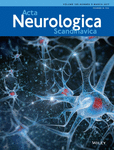Language improvement one week after thrombolysis in acute stroke
Abstract
Objectives
Language recovery following acute stroke is difficult to predict due to several evaluation factors and time constraints. We aimed to investigate the predictors of aphasia recovery and to identify the National Institute of Health and Stroke Scale (NIHSS) items that best reflect linguistic performance, 1 week after thrombolysis.
Materials and methods
We retrieved data from a prospective registry of patients with aphasia secondary to left middle cerebral artery (MCA) stroke treated with intravenous thrombolysis. Complete recovery at day 7 (D7) was measured in a composite verbal score (CVS) (Σ Language+Questions+Commands NIHSS scores). Lesion size was categorized by the Alberta Stroke Program Early CT score (ASPECTS) and vascular patency by ultrasound. CVS was correlated with standardized aphasia testing if both were performed within a two-day interval.
Results
Of 228 patients included (age average 67.32 years, 131 men), 72% presented some language improvement that was complete in 31%. Total recovery was predicted by ASPECTS (OR=1.65; 95% CI, 1.295–2.108; P < 0.00) and baseline aphasia severity (OR=0.439; 95% CI, 0.242–0.796; P < 0.007). CVS correlated better with standardized aphasia measures (aphasia quotient, severity, comprehension) than NIHSS_Language item.
Conclusions
Lesion size and initial aphasia severity are the main predictors of aphasia recovery one week after thrombolysis. A NIHSS composite verbal score seems to capture the global linguistic performance better than the language item alone.




